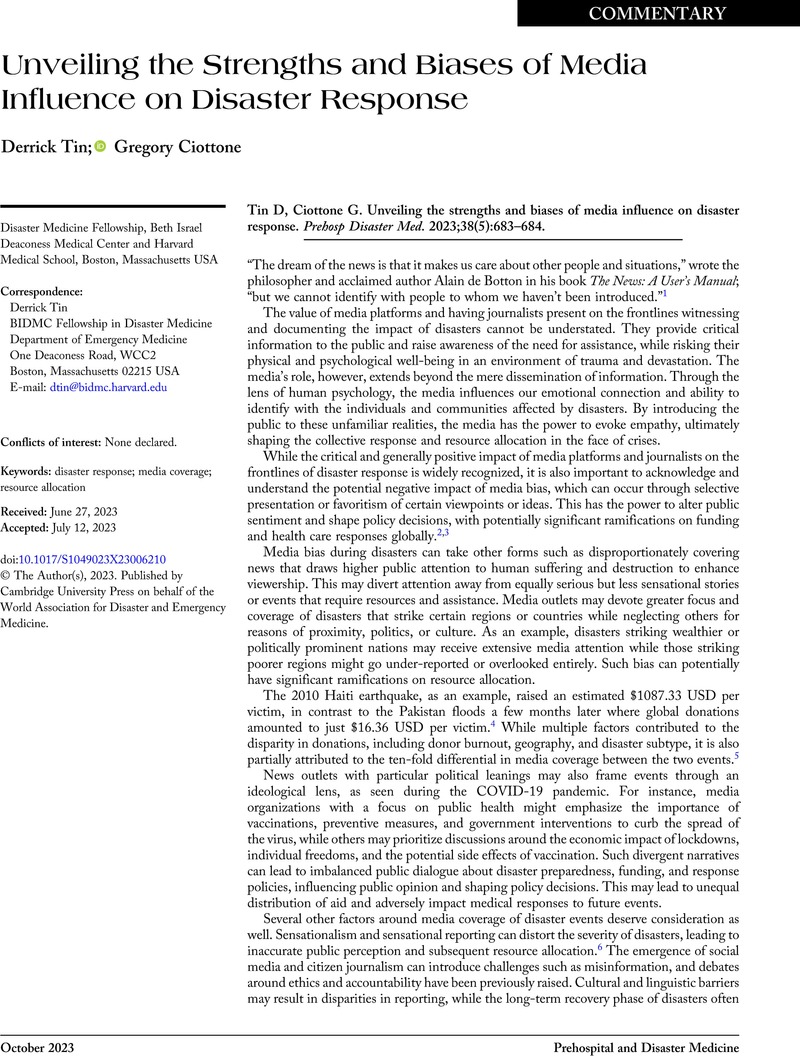No CrossRef data available.
Article contents
Unveiling the Strengths and Biases of Media Influence on Disaster Response
Published online by Cambridge University Press: 24 August 2023
Abstract
An abstract is not available for this content so a preview has been provided. Please use the Get access link above for information on how to access this content.

- Type
- Article Commentary
- Information
- Copyright
- © The Author(s), 2023. Published by Cambridge University Press on behalf of the World Association for Disaster and Emergency Medicine
References
De Botton, A. The News: A User’s Manual. 2014. https://books.google.com/books/about/The_News_A_User_s_Manual.html?id=ePeMEAAAQBAJ. Accessed June 20, 2023.Google Scholar
Ardèvol-Abreu, A, Gil De Zúñiga, H. Effects of editorial media bias perception and media trust on the use of traditional, citizen, and social media news. Journal Mass Commun Q. 2017;94(3):703–724.10.1177/1077699016654684CrossRefGoogle Scholar
Han, R, Xu, J, Pan, D. How media exposure, media trust, and media bias perception influence public evaluation of COVID-19 pandemic in international metropolises. Int J Environ Res Public Health. 2022;19(7).Google ScholarPubMed
Fisher, M. 4 Reasons Why Americans Aren’t Giving for Pakistan Flood Relief. The Atlantic. 2010. https://www.theatlantic.com/international/archive/2010/08/4-reasons-why-americans-arent-giving-for-pakistan-flood-relief/61898/. Accessed June 20, 2023.Google Scholar
Neely, B. Why We’ve Given Less To Pakistan’s Flood Victims. NPR (National Public Radio). 2010. https://www.npr.org/2010/09/02/129605789/why-weve-given-less-to-pakistans-flood-victims. Accessed June 20, 2023.Google Scholar
Walters, G, Mair, J, Lim, J. Sensationalist media reporting of disastrous events: implications for tourism. J Hosp Tour Manag. 2016;28:3–10.CrossRefGoogle Scholar



